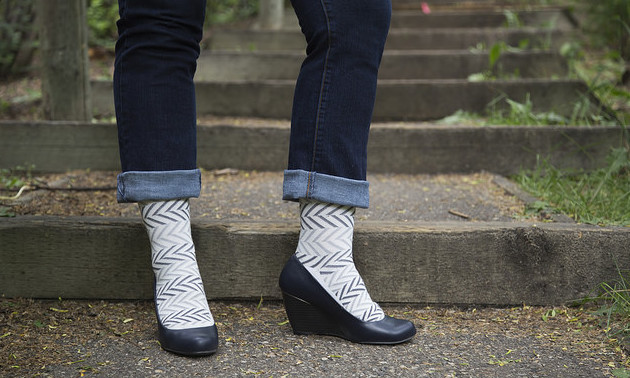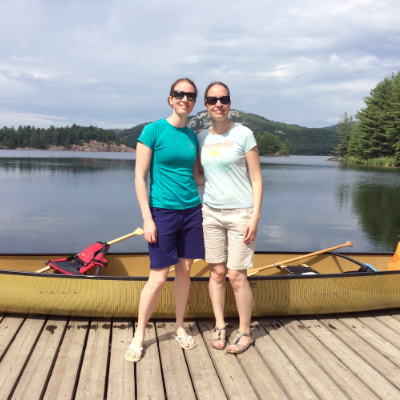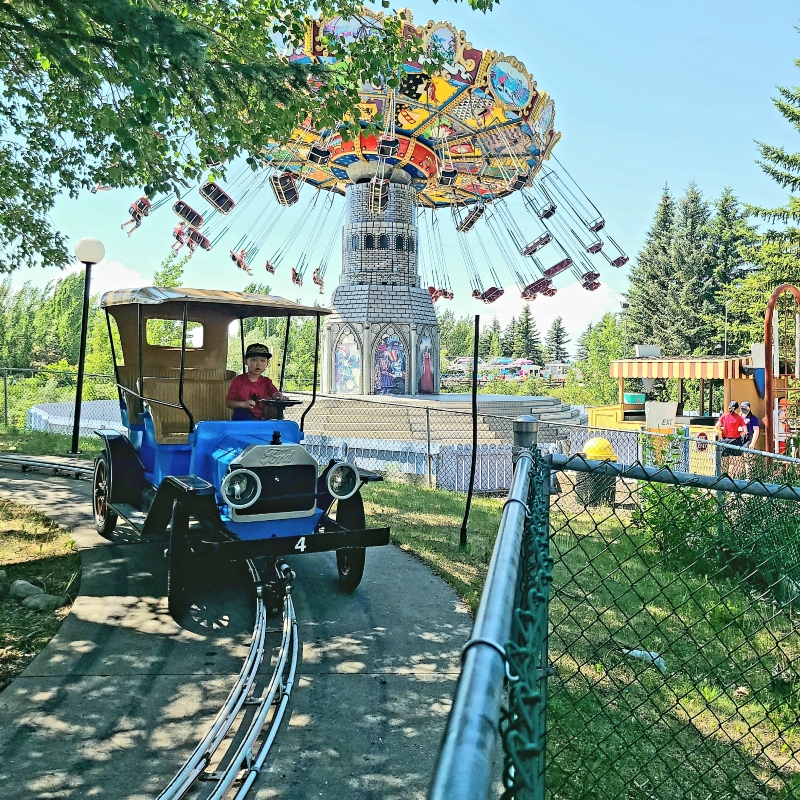Your Socks may save your life!
Compression socks don't have to be ugly

We’ve all heard of compression socks and some of us may already be wearing them. But the average person doesn’t understand their purpose or the extreme importance of what they may help prevent. For the most part we think of them in terms of the elderly and the disabled and that can’t be further from the truth.
Blood clots: Two very scary words. We don’t always understand what they are or what damage they can do. But they’re very frightening to the uninformed. What we don’t realize is blood clots don’t just happen to the elderly or unhealthy. They can affect everyone of every age, race and gender at any time.
What are blood clots?
Our bodies have a natural way of healing such as when we cut ourselves and a clot forms to stop the fresh blood from flowing. So how can something that’s natural and good in helping the process of healing be dangerous to us as well? Sometimes those clots are in our body and get stuck, causing a blockage that can then lead to all kinds of problems.
It’s like a rock in the river – if it’s small enough the water moves around it. But if it’s too large it causes a dam. This is the same with a blood clot in the body – it stops somewhere and if it’s small enough the blood will flow around it but if it’s larger it will cause the blood to dam up behind it.
If it’s small it may keep moving and break down but if it’s bigger it might break free and lodge itself in the legs, lungs or brain, blocking blood from flowing back into the heart, which may cause death. Statistics have shown that blood clots lead to more deaths than AIDS, breast cancer, prostate cancer and motor vehicle accidents combined.
Venous thromboembolism (VTE)
VTE is the technical name for when a blood clot forms in the vein, usually in the leg, and is called a deep vein thromboembolism. If it breaks free and travels to the lungs, which is very dangerous, it’s called a pulmonary embolism. When both happen it’s potentially lethal and is the leading cause of death and disability worldwide. Scary stuff.
Who is at risk?
Everyone is at risk—all ages, races and genders. This disease does not discriminate and is definitely not just about the elderly. There are certain factors that create more risk of creating blood clots than others.
- Sitting for long lengths of time—such as on a long trip over four hours
- Standing too long in one place
- Major surgery
- Knee or hip replacement
- Birth control pills, hormone replacement
- Automobile accident or a fall - trauma
- Family history
- Obesity
- Pregnancy complications
- Bone fracture
Prevention
There are some very simple ways to alleviate the potential for blood clots but it’s important to discuss it with your doctor even if there’s no family history. It’s better to be informed.
- The use of blood thinners
- Weight loss
- Be active, exercise regularly and walk
- Move around, get up and take a walk or stretch regularly
- Stop at least every two ours when travelling – get out and move around
- Drink plenty of water – stay hydrated
- Discuss your risks with your physician
- Use compression socks
- Watch for signs and symptoms
Everyone’s symptoms can run from mild to severe and may be similar to symptoms of other medical issues, such as muscle pain or spasms, shortness of breath, sore back and abnormal leg swelling. If in doubt, don’t take a chance. It’s better to get medical advice than to risk everything – it may save your life.
The most common symptom of VTE is swelling – an uncommon amount of swelling. If you are sitting down and notice your leg is swollen pay attention. Don’t ignore these symptoms!
Compression socks can be fashionable
Now we get to one of the easiest ways to help prevent blood clots and that is by wearing compression socks – but not just any old-fashioned compression socks. Wear socks with style.
Just because they are good for you doesn’t mean they have to look awful.
First of all, it’s best to understand how they can help. Compression socks work by squeezing your limbs, such as your legs. This increases the blood flow in your body, helping to prevent your blood from pooling and forming blood clots. In addition to preventing blood clots they can help reduce or prevent swelling, reduce pain and tiredness and increase recovery after exertion.
They may even prevent varicose veins. Depending on the circumstances there are different levels of support from mild to moderate to firm. We should add a sentence about the different levels of compression – 15-20 mmHg is everyday level (mild support); 20-30 mmHg is moderate support; and 30-40 mmHg is firm support.
One of the experts in compression socks is Angelika Goncalves DaSilva, a healthy, active athlete who, at 28 years of age, almost lost her life because of a blood clot. She tried ignoring her symptoms but her husband insisted she go to the hospital. “If I had ignored the symptoms and not gone to the hospital I would never have woken up that night,” she said.
As a vibrant young woman who was told that compression socks would help her prevent further clots, she was horrified and disappointed at what she found was available. DaSilva was looking for vibrant options to match her style.
“We all wear socks and sometimes they’re a reflection of our personality,” said DaSilva, who found that what was available was expensive, plain at best and ugly at worst, and made of nylon which makes the feet sweat. She started researching compression socks that were functional and fashionable and joined forces with compression manufacturers to form Sockology—whose socks definitely don’t look like compression socks. They’re vibrant, colourful, fun, cozy, natural, comfortable and functional. They may attract attention but that’s because they’re beautiful first and then their function can be discussed later to help educate others to their purpose.
Blood clots affect RVers
Being sedentary is one of the biggest risk factors in causing blood clots and RVers who travel long distances without stopping to stretch and move around are definitely at risk. Even if they are healthy and normally active the risks are definitely still there.
Live the life you want to live with an awareness of your body, its signs and symptoms. Follow preventive measures such as increasing activity and drinking lots of water. Discuss your concerns with your doctor and wear compression socks. People will soon be asking you where you got those fancy socks. Compression socks don’t have to be ugly but they can be life saving.
It comes down to education and if people understand the signs and symptoms of VTE and get to the hospital in time the survival rate is higher. Having the need for compression socks doesn’t mean that you have to broadcast that you have a medical issue. Compression socks should be a part of our everyday existence and become mainstream. Your socks really can be an important part of your life.








